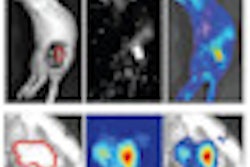Dear Radiation Oncology Insider,
As a medical discipline, the specialty of cancer is brutal. Treatments reflect trade-offs for patients. There are risks and rewards, partial successes and failures, side effects, and quality-of-life changes during and after treatment, potentially for years.
When a study is published about a lifesaving treatment that improves or maintains quality of life in the long term, its impact on clinical decision-making can be huge. Researchers from the University of Heidelberg in Germany have reported such news from meningioma survivors who underwent radiation therapy. The study is subject of the Insider Exclusive for this newsletter.
In other news, a large comparison study from the Netherlands has shown that patients who received radiation therapy after surgery for pituitary adenoma did not develop any more second tumors than patients who only underwent surgery. And a discovery from Moffitt Cancer Center in Florida about a radiosensitivity molecular signature may lead to better decisions for breast cancer patients. Learn more by clicking here.
The success of a prostate brachytherapy treatment program is built upon a foundation of quality assurance. The British Columbia Cancer Agency has described a program that can serve as a model for others. Get the details here.
Other articles of interest in the Radiation Oncology Digital Community include the following:
- Coverage of a keynote symposium at the American Association of Physicists in Medicine annual meeting on the role imaging technologies play in optimizing cancer treatment, by medicalphysicsweb editor Tami Freeman
- What professional organizations are doing in response to proposed Medicare cuts for intensity-modulated radiation therapy; click here for this AuntMinnie.com exclusive
- An analysis of the economics of building and operating a proton therapy facility
- The susceptibility of childhood cancer survivors to developing diabetes as adults -- one reason why it's imperative to offer lifetime follow-up



















